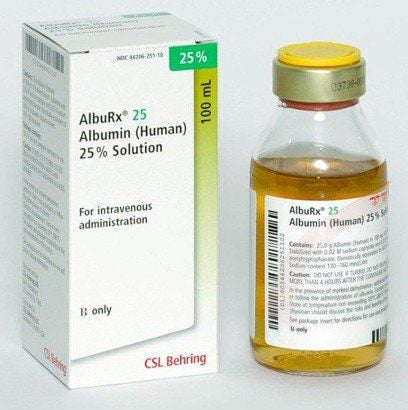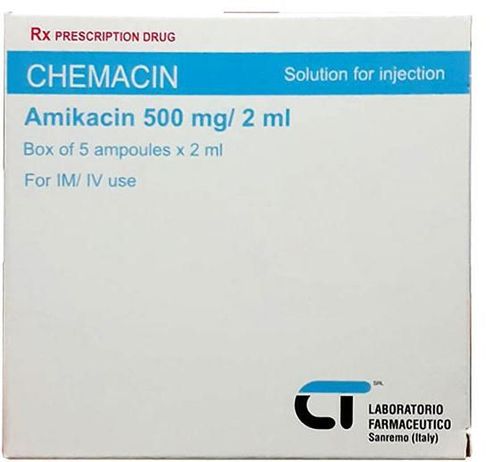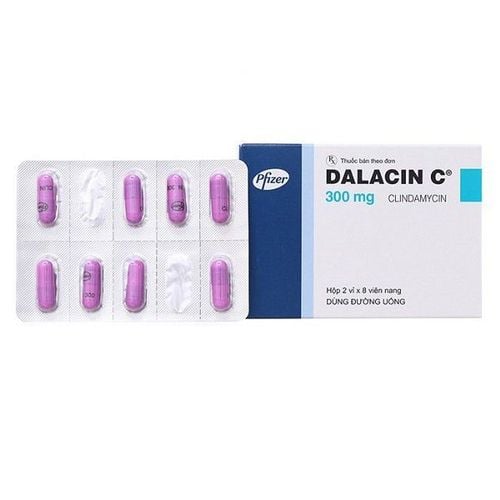This is an automatically translated article.
Narofil is a prescription drug, belonging to the group of drugs used to treat parasites, anti-infectives, antivirals and antifungals. The main active ingredient found in Narofil is Meropenem, which is commonly used in the treatment of infectious diseases in adults and children such as pneumonia and hospital-acquired pneumonia, urinary tract infections or intra-abdominal infections. ...1. What is Narofil?
Narofil drug is made in the form of a powder for injection, containing the main ingredient is Meropenem trihydrate with a concentration of 500mg per vial. Meropenem is a bactericidal agent that acts similarly to penicillin by inhibiting bacterial cell wall synthesis. Narofil has a broad spectrum of activity against gram-positive, gram-negative, aerobic and anaerobic bacteria. And it is stable to the hydrolysis of beta-lactamases secreted by most bacterial species. Since then, the active ingredient Meropenem helps Narofil drug have the ability to treat infections caused by bacteria sensitive to Meropenem. In addition, Narofil is a prescription drug, so patients only buy it with a prescription from a doctor or pharmacist.
With the above effects, Narofil is indicated for many groups of subjects in the following cases:
Pneumonia or hospital-acquired pneumonia; Urinary tract infections; Intra-abdominal infections; Gynecological infections (eg, endometritis or pelvic inflammatory diseases); Skin and skin structure infections; Meningitis ; Sepsis ; Empiric treatment of suspected bacterial infection in febrile neutropenic adults as monotherapy or in combination with antiviral and antifungal agents; Monotherapy or in combination with other antibacterial agents has been shown to be effective in the treatment of mixed infections; Using Narofil intravenously is effective in patients with cystic fibrosis and chronic lower respiratory tract infections when used as monotherapy or in combination with other antibacterial drugs; Besides, the drug is contraindicated for the following subjects:
Patients with hypersensitivity to the drug; The patient is allergic to the active substance, to other carbapenem antibacterial agents. Patients with severe hypersensitivity (symptoms such as anaphylaxis or severe skin reactions) to any other type of beta-lactam antibacterial agent (eg, penicillin or cephalosporin).
2. Instructions on how to take Narofil
How to use: Narofil is given intravenously (IV). Get more information from your doctor or healthcare professional. Refer to the daily dose as follows:
Adults:
Patients with pneumonia, urinary tract infections, gynecological infections such as endometritis, skin and skin structure infections: Take 500mg of the drug. Narofil intravenous (IV) every 8 hours; Nosocomial pneumonia, peritonitis, suspected infection in patients with leukopenia, sepsis: Administer 1g of Meropenem intravenously (IV) every 8 hours; With cystic fibrosis: Dosage can be up to 2g/8 hours; the majority of patients were treated with the above dose; With meningitis: The recommended dose is 2g every 8 hours; As with other antibiotics, extreme caution should be exercised when meropenem is used as monotherapy in the presence of serious or suspected Pseudomonas aeruginosa infections of the lower respiratory tract; Routine susceptibility testing is recommended during the treatment of infections caused by Pseudomonas aeruginosa. Children:
Children 3 months - 12 years of age: The recommended dose is 10-20 mg/kg every 8 hours depending on the severity and type of infection, susceptibility of the causative organism and disease status. pediatric; Children weighing > 50 kg: The adult dose is recommended; The recommended dose for pediatric meningitis is 40 mg/kg every 8 hours.
3. Narofil side effects
Generally, serious adverse events are rare. Adverse symptoms when taking Narofil were recorded and reported including:
Injection site: Inflammation, thrombophlebitis or pain at the injection site; Systemic Allergic Reactions: Rarely, systemic allergic reactions (hypersensitivity). However, some reactions such as angioedema and anaphylactic manifestations may occur; Skin: Rash, pruritus, urticaria. Serious skin reactions such as erythema multiforme, Stevens-Johnson syndrome and toxic epidermal necrolysis have been reported rarely; Digestive system: Abdominal pain and nausea, vomiting or diarrhea. Pseudomembranous colitis has also been reported; Hematologic: Thrombocytopenia, eosinophilia or thrombocytopenia, leukopenia and neutropenia (including agranulocytosis very rarely) are reversible. Hemolytic anemia is rarely seen. A positive direct or indirect Coombs reaction may occur in some patients receiving the drug; a decrease in partial thromboplastin time has been reported; Liver function: Increases serum bilirubin, transaminase, alkaline phosphatase and lactic dehydrogenase levels alone or in combination; Central nervous system: Headache, convulsions, paresthesias; Other undesirable effects: Oral and vaginal candidiasis. If you experience these symptoms, you need to stop using Narofil and notify your doctor for appropriate treatment.
4. Notes when using Narofil
There is some clinical and laboratory evidence of partial cross-allergy between carbapenem antibiotics other than beta-lactam antibiotics, penicillins and cephalosporins. Before initiating treatment with Narofil, the patient should be thoroughly inquired about a history of hypersensitivity reactions to beta-lactam antibiotics. It should be used with caution in patients with a history of this hypersensitivity. If an allergic reaction to meropenem occurs, the drug should be discontinued and appropriate action taken; When used for patients with liver disease, it is necessary to carefully monitor the levels of transaminases and bilirubin; Narofil is not recommended for infections caused by methicillin-resistant Staphylococcus; Caution should be exercised when co-administered with potentially nephrotoxic drugs; Narofil has the ability to reduce serum valproic acid concentrations. In some patients, serum valproic acid concentrations may be lower than therapeutic concentrations; Meropenem is not recommended for use in children under 3 months of age as it has not been clinically tested.
5. Narofil drug interactions
The drug can interact with Probenecid drugs, anticoagulants; The concomitant use of Meropenem and valproic acid/sodium valproate/valpromide is not recommended. Above is all information about Narofil drug, patients need to carefully read the instructions for use, consult a doctor / pharmacist before using. Absolutely do not arbitrarily buy Narofil treatment at home because there may be unwanted side effects.













